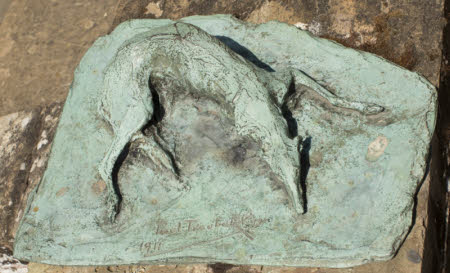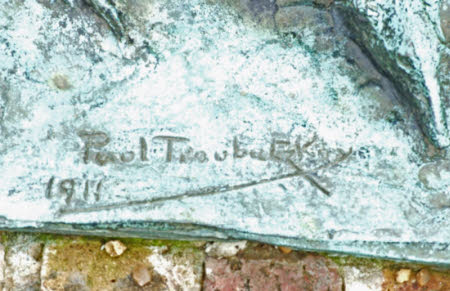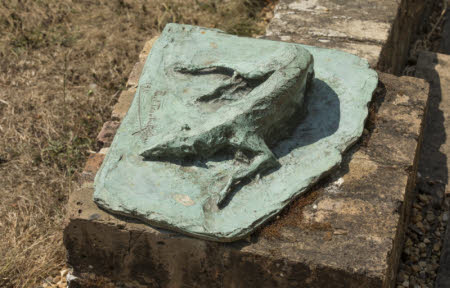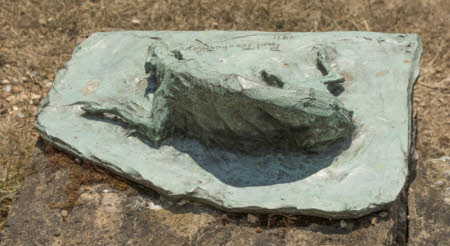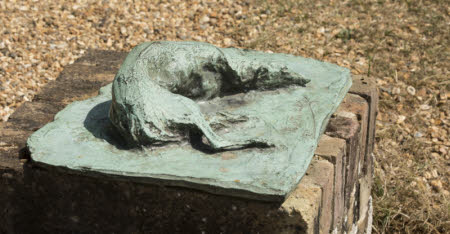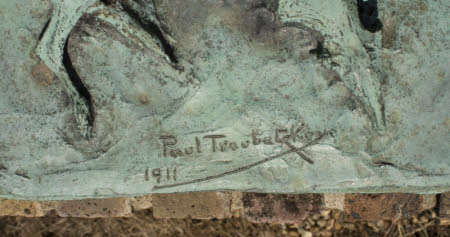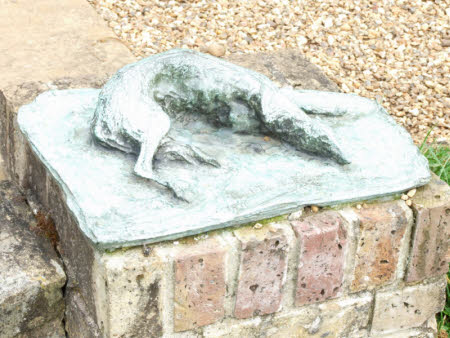Greyhound
Prince Paolo (Paul) Troubetzkoy (1866-1938)
Category
Art / Sculpture
Date
1911 (signed and dated)
Materials
Bronze
Measurements
90 x 380 x 300 mm
Order this imageCollection
Shaw's Corner, Hertfordshire
NT 1274982
Summary
Bronze statuette of a greyhound by Prince Paolo (Paul) Troubetzkoy (1866-1938), signed and dated 1911 on base. The dog lies with its left front leg extended, the right under its body, and nose to the ground. On a roughly rectangular base. Signed and dated on base: “Paul Troubetzkoy / 1911”. Cast by the Valsuani foundry.
Full description
The greyhound sculpture by Prince Paul Troubetzkoy was derived from his 1907 statuette of the aesthete Comte Robert de Montesquiou-Fezensac (Musée d’Orsay, Paris). It is not known when Shaw acquired the piece. The greyhound appears in a photograph Shaw took of F.E. Loewenstein in 1945 at Shaw’s Corner, where he stands holding the sculpture. Shaw and Troubetzkoy were friends for over thirty years, a reflection of their shared love of animals and vegetarianism. In 1931 Shaw wrote the preface to Troubetzkoy’s London exhibition at Colnaghi’s gallery, where 3 bronze portraits of Shaw were on show. Shaw described Troubetzkoy as a “humanitarian who can do anything with an animal except eat it”, noting that “it is as a faithful vegetarian that I am immortalized in bronze in this exhibition.” (Shaw, ‘A Word’, Sculpture by Prince Paul Troubetzkoy, London, P.&D. Colnaghi, December 1931). Shaw continued his praise: “When he models an animal, whether it is the tiniest domestic pet, or an overdriven carter’s horse…the result is so perfect in its truth to nature and its power of conveying some lesson or appeal, that you are rushed to the conclusion that its sculptor, like Barye [famous sculptor of animals], was born to model animals and nothing else.” For Shaw Troubetzkoy remained “one of the few geniuses of whom it is not only safe but necessary to speak in superlatives. He is the most astonishing sculptor of modern times.” There are 3 animal sculptures by Troubetzkoy in the collection. (Alice McEwan, 2020)
Provenance
The Shaw Collection. The house and contents were bequeathed to the National Trust by George Bernard Shaw in 1950, together with Shaw's photographic archive.
Credit line
National Trust Collections (Shaw’s Corner, The George Bernard Shaw Collection)
Marks and inscriptions
On base: Paul Troubetzkoy / 1911
Makers and roles
Prince Paolo (Paul) Troubetzkoy (1866-1938) , sculptor
